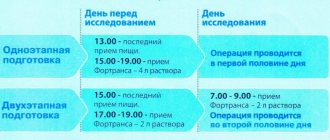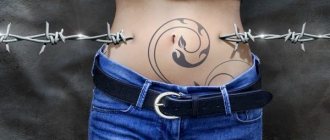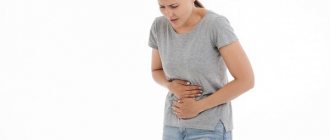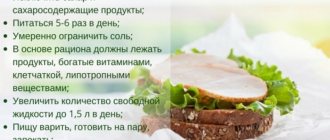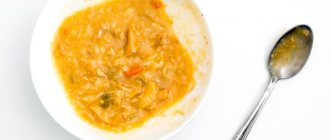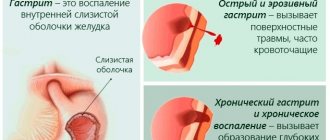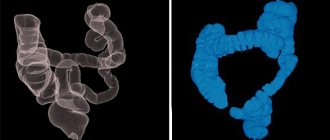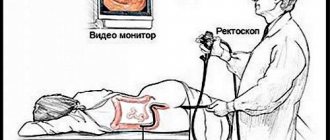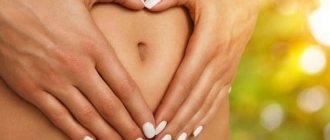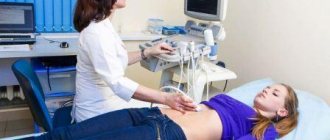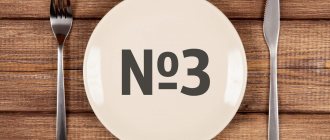Indications for use
A low-fiber diet is prescribed for preparation before endoscopic procedures (colonoscopy, sigmoidoscopy, etc.) and abdominal surgeries, as well as for certain diseases of the gastrointestinal tract (Crohn's disease, diverticulitis, irritable bowel syndrome, ulcerative colitis) .
The diet is incomplete and, when used for a long time, causes a deficiency of nutrients in the body. The maximum period during which this nutrition can be used without harm to the body is up to 5 days.
In what other cases is a diet necessary?
It is recommended to adhere to this diet in a number of other cases. It is relevant before irrigoscopy, MRI, CT and ultrasound of the abdominal cavity, and virtual colonoscopy. A slag-free diet before sigmoidoscopy is also desirable, although in this case you can do without it.
Some use this method to cleanse the intestines and improve their body health. In addition, those people who are looking to lose weight can also start with this type of diet. Very often it helps out after busy holidays and feasts, when a person feels heaviness in the stomach and has problems with bowel movements.
Rules for a slag-free diet
The basic principles of a slag-free diet concern the food intake and serving size a few days before the procedure, as well as the list of permitted and prohibited foods.
In order for preparation for intestinal colonoscopy to be successful, you must follow the basic nutritional rules:
- exclude prohibited foods from the diet for a period of 5 to 3 days before endoscopic examination;
- eat 5 times a day in small portions (every 3 hours);
- drink a lot of water (2-3 liters) to improve digestion;
- on the last day, small amounts of food should be consumed in the first half of the day (at 8.00, 11.00 and 14.00).
The last day before a colonoscopy, you should eat liquid meals in the form of broth, puree soup, yogurt to quickly move stool and cleanse the intestines by the appointed time. The evening before the examination, as a rule, additional means are used to cleanse the intestines in the form of laxatives or an enema.
Content
In the modern world, there are many medical procedures that require special training. Colonoscopy is no exception to the rule. A diagnostic study helps to most accurately identify the causes of the patient’s anxiety, pain, intestinal obstruction and other moments of discomfort, and sometimes pain in the rectal area. For an accurate diagnosis, it is important to cleanse the intestines of food and toxins, free it from bloating, and achieve the most calm state; this is exactly what a toxin-free diet will help with.
In this article we will talk about a slag-free diet before a colonoscopy, a possible menu and a list of allowed foods that can be consumed 3 days before the procedure.
What you can and cannot eat (table)
The main property of products that are allowed on a slag-free diet is the minimal amount or absence of fiber in the composition. Despite the fact that fiber is a very valuable element of nutrition, consuming foods high in fiber increases the bulk of the stool and also leads to increased gas and bloating.
| Grocery list | What can you eat | What not to eat |
| Flour products | White bread and yeast-free baked goods made from white flour (muffins, cookies). Crackers, pasta | Bread and pastries made from whole grain flour, bread with added grains, seeds, nuts, raisins |
| Cereals | White rice | Oatmeal, granola and all other types of cereals. Legumes |
| Meat | All types of meat, poultry, fish and meat broths | |
| Dairy | Milk, yogurt, sour cream, cottage cheese | Yoghurts with added nuts, fruits and berries |
| Eggs | Allowed | |
| Oil | All types of oils | |
| Beverages | Coffee, tea, cocoa with sugar. Juice without pulp | Fruit and vegetable juices with pulp. Drinks with bright red or purple colors |
| Vegetables | Canned or boiled carrots, asparagus, mushrooms, potatoes (necessarily peeled). Cucumbers without skin and seeds. Vegetable puree soups from permitted vegetables and broths | Vegetables with seeds, peel, as well as corn, peas, cabbage, beans, onions, garlic, etc. Greenery |
| Fruits | Ripe fruits without seeds and skin in small quantities. Fruit juice without pulp | Fruits with seeds, shell, hard, unripe. All varieties of dried fruits |
| Nuts, seeds | All varieties of nuts and seeds | |
| Dessert | Hot, dark, milk chocolate, pudding, ice cream, sorbet, jelly without dyes and fruit pulp, honey, candies | Sweets and baked goods with the addition of coconut flakes, nuts, seeds, grains, dried fruits, raisins, dried apricots, prunes, etc. Desserts with bright red and purple dyes. Jam, popcorn |
The day before the procedure, meals should consist of a large number of drinks and three small meals (in liquid and puree form):
- water, tea, coffee, compote, jelly, apple juice (all without adding berries and fruits);
- vegetable, meat, fish broth without adding vegetables and cereals;
- a small piece of meat or fish in broth.
On the last day before the procedure, it is forbidden to consume milk and fermented milk dishes, stewed vegetables, orange, tomato and grapefruit juices.
The essence of the method
The purpose of a slag-free diet is to remove harmful substances, unnecessary liquids and toxins from the body or only from the digestive tract, as well as to normalize stool.
This diet can also be prescribed for various purposes. Most often it is followed before procedures in the hospital. This could be preparation for surgery or diagnosis. As a rule, doctors prescribe a three-day slag-free diet, but there will be no harm in prolonging it. If you just want to cleanse the body, improve bowel function and get rid of excess weight, then the duration can be increased to 7 days.
https://www.youtube.com/watch?v=9gfFq-vRfbk
The basic principle on which a slag-free diet is based is to eat foods with reduced calorie content, easily digestible; preference is given to refined foods that are completely processed by the body, without delay, leaving it after a short time. At the same time, food should be fortified and varied.
Products containing preservatives, dyes, fat and various artificial additives are prohibited. It is of great importance to drink clean water in sufficient quantities, which will help cleanse the body and remove waste products. As a result, in a few days the amount of toxins is reduced, most of them are eliminated naturally.
You should prepare for the procedure carefully, following the rules of the diet for several days. Most experts strongly recommend going on a diet 5-7 days before the scheduled date of the procedure.
The strict technique before a colonoscopy is that you should give up certain foods, consume slag-free food and be sure to follow a drinking regime. It’s good when a specialist writes out a menu for the patient individually. However, it is not at all difficult to compose it yourself. In addition to consuming light foods, you should drink at least 2.5 liters of water in small quantities every day.
What other rules should you follow:
- In the morning you should eat oatmeal, as it has excellent cleansing properties. Be sure to cook porridge in water. It is preferable to complement your meal with a cup of green tea. It is strictly forbidden to add sugar or other sweeteners to the drink.
- At lunchtime before a colonoscopy, it is best to eat boiled or steamed vegetables. It is not forbidden to diversify your diet with dried fruits, as well as lean meat in small quantities.
- In the evening, a salad made from vegetables will be useful for dinner. Additionally, you can cook lean fish by boiling it in water without adding salt. Before going to bed, to satisfy hunger, cleanse the intestines and remove toxins from it, it is recommended to drink 200 ml of kefir.
Before the examination, this technique has its own characteristics. In order to better understand them, you should familiarize yourself with the sample menu for 7 days. Here are the approximate portion sizes, you can cut them down or increase them a little, but under no circumstances overeat. You can use this diet or create your own menu based on the foods allowed in this diet.
| Diet day | Breakfast | Dinner | Dinner |
| First day | 80-100 g oatmeal; 150 ml coffee; 1 piece of toast with a thin layer of butter; 1 banana. | 100 g low-fat broth; 100 g mashed potatoes; 200 ml jelly. | 80 g spaghetti; 100 g vegetable salad; 70 g boiled chicken breast; 200 ml tea. |
| Second day | 100 g rice porridge; 100 g of grated boiled fish; 1 loaf of bread with butter; 150 ml coffee. | 150 g semolina soup; 1 small bun; 200 ml kefir. | 150 g cottage cheese casserole; 2 biscuits; 200 ml fruit compote. |
| The third day | 100 g semolina porridge with butter; 1 wheat cracker; 150 ml coffee. | 150 g vegetable puree soup; 50 g mashed potatoes; 80 g fish soufflé; 200 ml tea. | 200 ml meat broth; 1 loaf; 200 ml fruit compote. |
| Fourth day | 150 g oatmeal in water; 200 ml warm milk. | 150 ml soup with meat broth; 100 g vegetable puree; 80 g jelly; 150 ml coffee. | 130 g boiled chicken breast; 70 g rice porridge; 200 ml kefir. |
| Fifth day | 150 g pasta with milk; 1 orange; 1 kiwi. | 150 g meat broth; 80 g mashed potatoes; 70 g of boiled, grated fish; 200 ml vegetable juice. | 150 g cottage cheese casserole; 200 ml kefir. |
| Sixth day | 150 g of oatmeal in water with the addition of 1 tsp. honey; 200 ml green tea. | 100 g vegetable puree soup; 70 g vermicelli; 80 g boiled ground chicken breast; 200 ml tea. | 150 g buckwheat porridge; 50 g chicken pate; 200 ml kefir. |
| Seventh day | 100 g semolina porridge; 1 loaf of bread with a thin layer of butter; 150 ml coffee. | 100 g chicken broth; 70 g fish soufflé; 80 g zucchini puree; 200 ml tea. | 200 ml green tea or boiled water. |
Diet menu before colonoscopy for 3 days
When drawing up a menu for a slag-free diet, it is necessary to take into account the possible feeling of hunger, which quickly sets in after drinking vegetable, fruit juices and sugar, as well as the lack of slow carbohydrates in food, which contributes to a decrease in performance.
In order for the diet in preparation for intestinal colonoscopy to be successful, you should adhere to several rules when preparing your diet:
- include protein in food 2 times a day (meat, fish, poultry, eggs);
- eat jelly, as the dish gives you a feeling of fullness for a long time;
- eat puree soup or stewed vegetables every day;
- include fermented milk dishes in the daily diet 1-2 times a day;
- do not overeat permitted desserts and baked goods made from white flour, but consume one small portion once a day.
3rd day
- Breakfast: sandwich with cheese and boiled meat, tea.
- Lunch: berry jelly without pulp.
- Lunch: steamed meatballs (minced meat with white rice), cocoa, 3 crackers.
- Afternoon snack: fruit juice.
- Dinner: cottage cheese with yogurt and honey.
2nd day
- Breakfast: stewed fish with carrot puree.
- Lunch: fruit juice.
- Lunch: creamy mushroom soup, tea, 10 grams of chocolate.
- Afternoon snack: milk jelly.
- Dinner: boiled potatoes (1-2 pcs.), cucumber without skin and seeds.
The day before the colonoscopy
- Breakfast: meat broth with a small piece of pulp.
- Lunch: apple compote jelly.
- Lunch (before 16.00): vegetable broth without pulp.
- Drinking water, tea, coffee, etc. is allowed throughout the day.
Full list of permitted products
- Chicken breast, lean turkey, veal and beef without fat.
- Lenten or vegetable broths.
- Low-fat cottage cheese and low-calorie cheese.
- Weak green tea without added sugar, and in the first two days, weak coffee.
- Buckwheat and rice porridge on water.
- Light juices and light, slightly sweetened compote.
- Butter in moderation.
- Crackers and dry biscuits.
- Soft-boiled egg or in a steam bath.
- Low percentage kefir and fermented baked milk.
- Pastila or marshmallows without chocolate.
The list of allowed foods on a slag-free diet is quite impressive; it will help you prepare for the procedure and not go hungry.
Colon cleansing drugs
The diet before intestinal colonoscopy is not the only condition for preparing for the procedure, since it does not guarantee 100% cleansing of the lower intestines. Also, to further prepare the rectum and sigmoid colon for visual examination, it is necessary to use medications or perform an enema.
Colon cleansing medications, which are most often used before a colonoscopy, have an osmotic effect - they interfere with the absorption of water in the large intestine, while creating pressure, which causes rapid emptying of the rectum.
Laxatives have a mild effect on the gastrointestinal tract, are not absorbed during the digestion of food and efficiently cleanse the lower gastrointestinal tract:
- Fortrans;
- Endovalk;
- Duphalac;
- Dinolak.
The use of laxatives is indicated in the afternoon before colonoscopy.
For allergies to laxatives, castor oil is used. On the day before the examination (at 14.00-15.00), drink 2 tablespoons of castor oil. It is important not to eat food 2 hours before taking the oil, and after that you should refrain from any food.
An enema is an alternative to laxatives and is performed in several ways:
- in the classical way using an Esmarch mug;
- with the help of microenemas - a laxative for rectal use.
Like medications, an enema is used the evening before the procedure and, if necessary, in the morning.
The choice of means for additional intestinal cleansing is carried out depending on preferences, since each presented type of procedure has its own pros and cons in use.
Diet according to the first option
The creators of this diet initially intended that the entire human diet should consist only of products that were grown with one’s own hands. This is the only way to be sure that they contain no harmful substances. But in reality it is very difficult to bring this to life, so there is a principle by which you can plan your menu.
Most often, our body is clogged by those foods that contain a lot of calories, and they should be excluded. In addition, you need to eat foods that remove harmful substances from the body; this is what a slag-free diet means. What can you eat during this period? In fact, there are many useful products on this list.
The slag-free diet according to the first option is followed for only three days. It only removes toxins from the body. You don't even have to think about losing weight. You can eat berries, fruits, and drink mineral water in small quantities. Other products need to be removed from the menu.
You can have breakfast with an apple and mineral water. For lunch, eat two bananas and drink 500 milliliters of mineral water. Have a fruit salad for dinner. Pineapple, strawberries or wild strawberries are perfect for it.
If you follow this type of slag-free diet, you can eat the following foods:
- Low-fat meat broths and soups based on it;
- Lean veal or beef;
- Vegetable decoction;
- Boiled chicken;
- Fish dishes;
- Low-calorie cottage cheese and cheese;
- It is useful to consume jelly, compote and juices.
Borscht, okroshka, milk soups, fatty meat and fish, sausage, salted and smoked foods are prohibited. You also need to exclude sweet foods, kvass, and alcoholic beverages from the menu.
Carefully study the list of allowed foods while following a slag-free diet. Based on the information received, create a menu for three days. It could be like this:
- On the first day, boil 500 grams of cabbage in two liters of water. Season it with a teaspoon of olive oil. Divide the resulting dish into five servings. Eat throughout the day. Wash it down with cabbage broth. Additionally, you can quench your thirst with high-quality water;
- On the second day, boil a kilogram of leeks in 1.5 liters of water. Divide the vegetable broth into five servings. Add olive oil and herbs. It is important to drink plenty of plain water;
- On the third day, prepare the salad. Mix a kilogram of stem celery with cucumbers (200 grams) and herbs. Make a dressing for the dish from lemon juice and olive oil. Eat the salad in four servings throughout the day.
Another menu option for following a slag-free diet
- First day: in the morning, drink warm mineral still water. At 11 pm, eat an apple. Have lunch with two bananas and mineral water. Dine on fruits and berries.
- Day two: Eat a banana with water in the morning. Have lunch with an apple and berries (200 grams). Have two pears for dinner.
- Day three: have breakfast with an apple and water, lunch with two pears, and dinner with citrus fruits or berries.
A slag-free diet speeds up digestion. But it cannot be observed for more than three days. Since protein is completely excluded from the diet, which is dangerous for health in the future. Therefore, follow such a diet only if a study is indicated or surgery is planned. You should also not follow it without consulting a doctor.
Now you know what you can and cannot eat when following a slag-free diet, when you need to follow it. Do not violate the nutritional rules under any circumstances in order to obtain the correct research results or to recover from anesthesia after surgery without consequences. You should not follow a slag-free diet for weight loss, as it is intended for other purposes.
What is a colonoscopy
Colonoscopy is a diagnostic method that allows you to assess the condition of the colon and identify various pathological processes in its cavity. In addition, a colonoscopy can also be a therapeutic procedure—during it, some surgical procedures can be performed.
Using this study, it is possible to identify and differentiate various types of colitis, polyps and tumors of the colon. As therapeutic manipulations, medications are applied directly to the intestinal mucosa, polyps are removed, and bleeding is stopped.
Colonoscopy is a method of detecting various pathologies of the colon using endoscopic equipment
Foods excluded from the diet
prohibited foods: for example, legumes
The diet before FCS is designed to free the intestines from the accumulation of large bubbles of gas, feces, and solid food particles. Therefore, there are foods that you have to forget about for a week, even if you love them. Products excluded:
- increasing gas formation in the intestines (all types of legumes in boiled and canned form, carbonated and pulpy drinks);
- stimulating fermentation processes (baked goods and confectionery products, cabbage, especially sauerkraut);
- poorly digestible, which lead to the formation of large amounts of feces, irritate the mucous membrane (fatty, spicy meat with a lot of cartilage, smoked meats, pickles and marinades, nuts and seeds, raw vegetables and fruits).
Before a colonoscopy, you are not allowed to eat dried fruits, fruits with seeds and skins that are in compote, berries rich in fiber (watermelon), fruits that have membranes in their structure (tangerines, oranges, grapefruits). Fresh apples and pears are not allowed. You will have to refrain from exotic foods (pineapple, coconut). Under no circumstances should you eat popcorn. You need to give up pork and lamb fat and nut oil.
